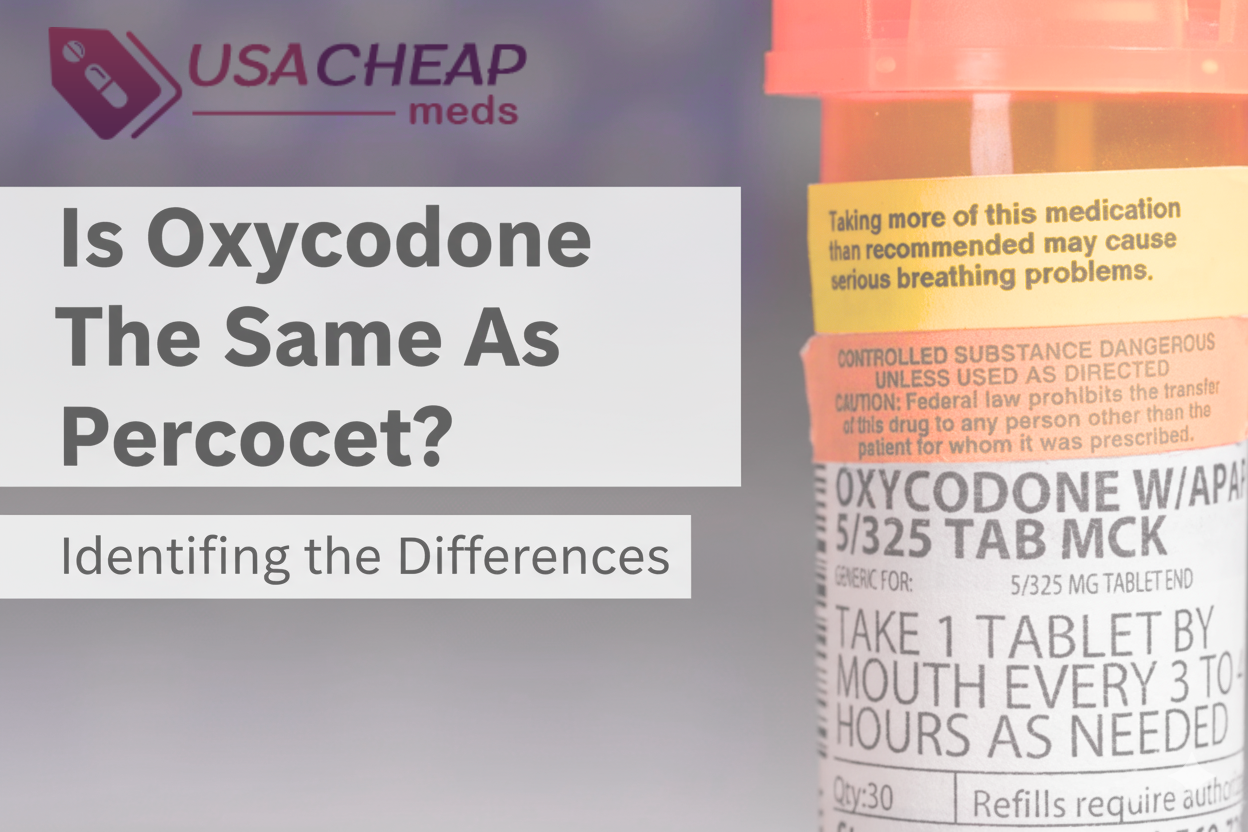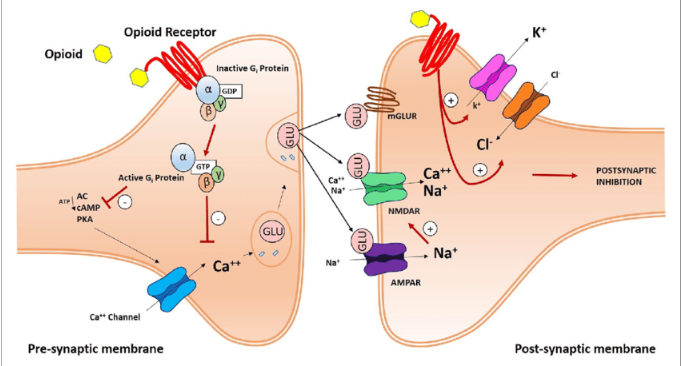
Is oxycodone the same as Percocet? This question becomes especially important when we consider that in 2021, approximately 1.8% of Americans ages 12 or older had a prescription opioid use disorder. When patients receive prescriptions for pain relief, understanding the differences between these medications is crucial for proper use and safety.
In fact, the Percocet vs oxycodone confusion is common among patients. Many don’t realize that a single oxycodone-CR tablet can contain up to 80 milligrams of oxycodone—equivalent to 16 Percocet tablets. This significant difference highlights why we need to clearly understand these medications. However, the confusion is understandable since OxyContin (a brand of oxycodone) was developed in 1995 to provide long-lasting pain relief, reducing how often people with severe pain needed to take pills.
In this guide, we’ll clarify the distinctions between these medications, explain how they work to relieve pain, and discuss their potential risks—including why opioids have become the leading cause of drug overdose, contributing to an estimated 80,411 deaths in the United States in 2021. Understanding these medications is not just about convenience but about your safety and wellbeing.
What is the difference between oxycodone and Percocet?
The fundamental difference between oxycodone and Percocet lies in their composition. Oxycodone is a standalone semisynthetic opioid that acts on the central nervous system to relieve pain. It’s classified as a potent opioid agonist with no antagonist properties. Primarily available in tablet, capsule, and oral solution formulations, oxycodone comes in various strengths ranging from 5 mg to 80 mg.
Conversely, Percocet is a combination medication containing both oxycodone and acetaminophen. This distinction is crucial because acetaminophen enhances the pain-relieving effects of oxycodone while also providing fever reduction capabilities. The typical dose in Percocet contains 5-10 mg of oxycodone and 300-600 mg of acetaminophen per tablet.
Additionally, patients taking Percocet must monitor their total acetaminophen intake. The FDA warns that exceeding 4 grams (4,000 milligrams) of acetaminophen in 24 hours can potentially cause severe liver damage. This risk increases for individuals with underlying liver disease or those who consume alcohol.
Moreover, while both medications work effectively for pain relief, they have different applications. Oxycodone alone offers more flexible dosing options, including extended-release formulations for long-term pain management. Meanwhile, Percocet provides the dual benefit of opioid pain relief plus acetaminophen’s anti-fever properties, making it particularly useful for painful conditions accompanied by fever.
How do these medications work for pain relief?

Both oxycodone and Percocet relieve pain through specific interactions with the body’s nervous system. Oxycodone, the active opioid in both medications, belongs to a class of narcotic analgesics that works by changing how the brain and nervous system respond to pain signals.
Fundamentally, oxycodone binds to specific opioid receptors—primarily mu-receptors—distributed throughout the central nervous system. Upon binding, it triggers a cascade of cellular events that ultimately inhibits the transmission of pain signals. This process involves decreasing neurotransmitter release and hyperpolarizing neurons, essentially blocking pain messages from reaching the brain.
For Percocet users, the addition of acetaminophen provides a complementary mechanism. This non-opioid component enhances oxycodone’s pain-relieving effects through different pathways, creating a synergistic effect.
Regarding onset and duration, both medications begin working quickly. Oxycodone starts relieving pain in 10-30 minutes, reaching peak effectiveness within 60-90 minutes. Immediate-release formulations typically provide relief for 3-6 hours, whereas extended-release versions can last 12 hours.
Furthermore, unlike some medications that merely mask pain, opioids affect how pain signals are processed at multiple levels—from peripheral nerves at the pain source to the brain’s perception centers—making them particularly effective for moderate to severe pain.
What are the risks and side effects of each?
Despite their effectiveness for pain relief, understanding the risks of oxycodone and Percocet remains vital for patient safety. Although both medications share similar side effects, there are key differences in their risk profiles.
Common side effects of oxycodone include drowsiness, dizziness, nausea, vomiting, constipation, headache, and dry mouth. Percocet users experience these same reactions plus additional risks related to acetaminophen.
Notably, Percocet carries an added danger of liver damage if acetaminophen intake exceeds 4,000 mg in 24 hours. This risk increases significantly with long-term use or alcohol consumption.
Both medications can cause life-threatening respiratory depression, particularly during the first 72 hours of treatment or after dose increases. Signs of overdose include pinpoint pupils, extreme drowsiness, cold/clammy skin, slowed breathing, and unconsciousness. If you suspect an overdose, call 911 immediately and administer naloxone if available.
Beyond physical side effects, both medications carry serious risks of tolerance, dependence, and addiction. In 2022, approximately 107,941 people died from drug overdoses, with 76% involving opioids. Physical dependence can develop after just one week of regular use.
Always take these medications exactly as prescribed and never combine them with alcohol, benzodiazepines, or other central nervous system depressants, as this dramatically increases overdose risk.
Conclusion
Understanding the distinction between oxycodone and Percocet remains essential for anyone prescribed these medications. Though related, these pain relievers differ significantly in composition, with oxycodone functioning as a standalone opioid while Percocet combines oxycodone with acetaminophen. This difference affects not only their applications but also their safety profiles.
Patients must remember that despite their effectiveness, both medications carry serious risks. The added acetaminophen in Percocet creates additional liver damage concerns, especially when taken in high doses or combined with alcohol. Additionally, both medications can lead to respiratory depression, tolerance, dependence, and addiction—risks we should never underestimate.
The alarming statistics surrounding opioid overdoses highlight why proper knowledge about these medications matters. Safe use demands strict adherence to prescribed dosages and awareness of warning signs. Above all, communication with healthcare providers about pain management goals, concerns, and side effects should remain a priority.
Whether prescribed oxycodone or Percocet, patients should approach these medications with appropriate caution. Effective pain management certainly matters, but so does your long-term health and safety. This balanced perspective will help you make informed decisions about your pain relief options while minimizing potential harm.
Key Takeaways
Understanding the differences between oxycodone and Percocet is crucial for safe pain management and avoiding potentially life-threatening complications.
• Oxycodone is a standalone opioid, while Percocet combines oxycodone with acetaminophen – this composition difference affects dosing, safety, and liver damage risks.
• Percocet users must limit total acetaminophen to 4,000mg daily to prevent severe liver damage, especially when consuming alcohol or other acetaminophen-containing medications.
• Both medications can cause respiratory depression and overdose within 72 hours of starting treatment – watch for pinpoint pupils, extreme drowsiness, and slowed breathing.
• Physical dependence can develop after just one week of regular use – never exceed prescribed doses or combine with alcohol, benzodiazepines, or other depressants.
• Always communicate openly with healthcare providers about pain levels and side effects to ensure safe, effective pain management while minimizing addiction and overdose risks.
These medications require careful monitoring and strict adherence to prescribed guidelines. With opioids contributing to over 80,000 deaths annually in the US, understanding these differences isn’t just about pain relief—it’s about protecting your life and long-term health.
FAQs
Q1. Is Percocet more effective for pain relief than oxycodone alone?
Ans. Percocet, which combines oxycodone with acetaminophen, may provide more comprehensive pain relief for some individuals due to its dual-action approach. However, the effectiveness can vary depending on the specific pain condition and individual response.
Q2. What are the generic names for Percocet?
Ans. The generic name for Percocet is oxycodone-acetaminophen. This combination medication contains both the opioid oxycodone and the non-opioid pain reliever acetaminophen.
Q3. How does oxycodone compare to hydrocodone in terms of potency?
Ans. Oxycodone is generally considered more potent than hydrocodone, meaning it can provide the same level of pain relief at a lower dose. However, individual responses to these medications can vary.
Q4. Are there any alternatives to Percocet for pain management?
Ans. Yes, there are alternatives to Percocet for pain management. One example is Vicodin, which contains hydrocodone and acetaminophen. Both medications have similar durations of action, providing pain relief for about 4 to 6 hours.
Q5. What are the main risks associated with taking oxycodone or Percocet?
Ans. The main risks include respiratory depression, especially within the first 72 hours of treatment, potential for addiction and dependence, and common side effects like drowsiness and constipation. Percocet users face an additional risk of liver damage due to its acetaminophen content if taken in high doses or combined with alcohol.

Leave a Reply